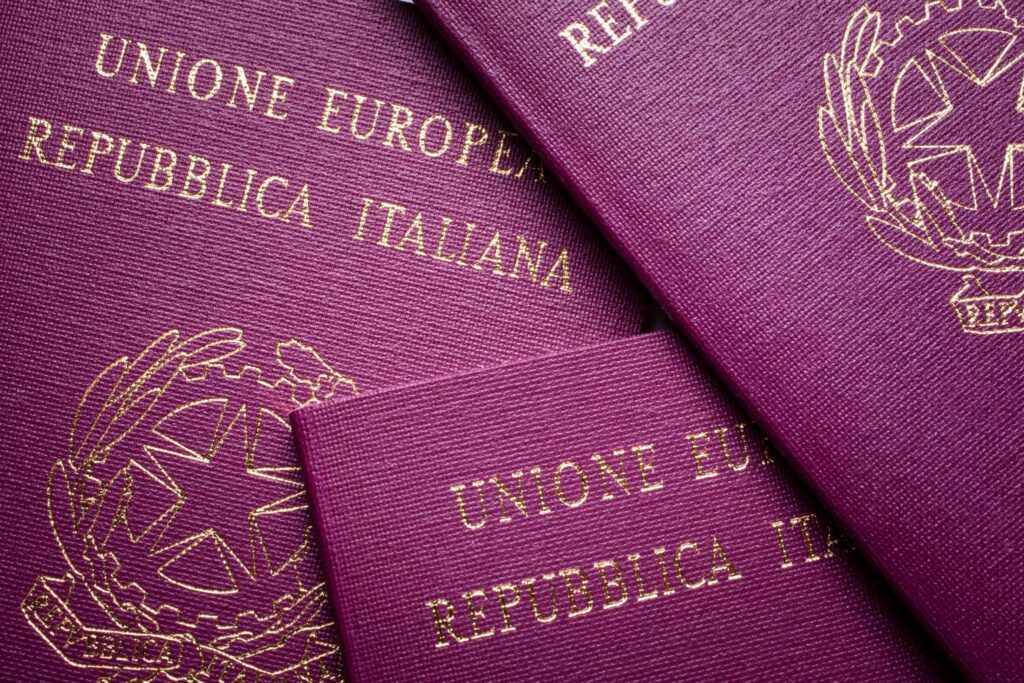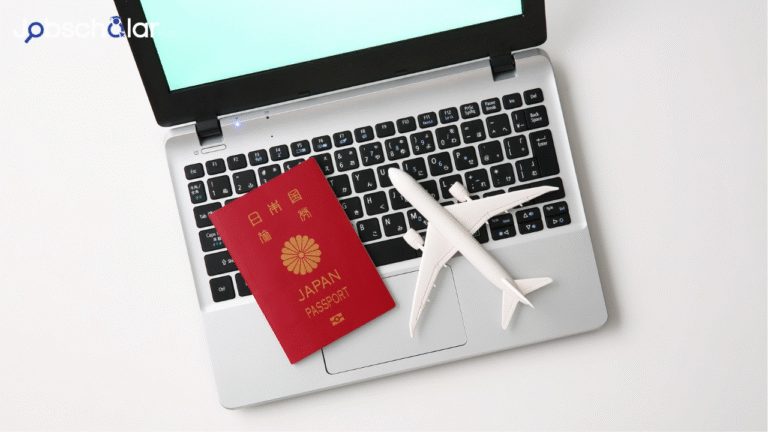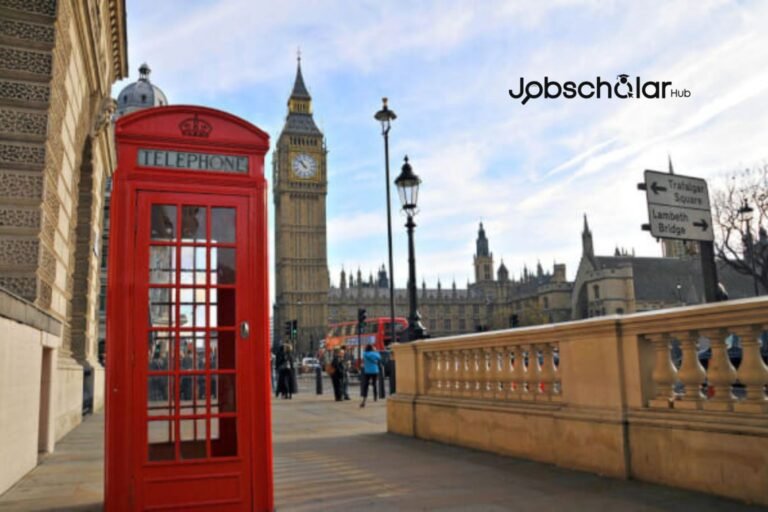Dual citizenship applications in Italy just got more expensive. Consulate fees jumped from €300 to €600 per person this year. Why should you bother? Holding an Italian passport means unrestricted access to live and work across the EU. Whether you’re claiming it by ancestry or marriage, the benefits are concrete, but the truth is that the process isn’t simple.
This guide breaks down the latest requirements, expenses, and steps to secure your status. No long talk, just what you need to know.
Table of contents
- Who Can Get Dual Citizenship in Italy?
- How Much Does Dual Citizenship in Italy Cost?
- What Are the Pros of Having Dual Citizenship in Italy?
- What Are the Cons of Dual Citizenship in Italy?
- How To Apply for Dual Citizenship in Italy? Step by Step Guide
- Step 1: Research Your Family Tree (2-4 weeks)
- Step 2: Gather Required Documents (3-6 months)
- Step 3: Obtain Apostille Certifications (2-4 weeks)
- Step 4: Get Professional Italian Translations (2-3 weeks)
- Step 5: Choose Your Application Location
- Step 6: Submit Your Application
- Step 7: Wait for Processing and Follow Up
- Step 8: Receive Your Italian Documents
- Is Dual Citizenship in Italy Worth the Time and Money?
- Frequently Asked Questions
- Conclusion
- References
- Recommendations
Who Can Get Dual Citizenship in Italy?

Most people qualify for Italian dual citizenship through family ties (“jure sanguinis”). If you can trace your ancestry back to Italy without any breaks in the line, you may be eligible, even if your last Italian-born relative left the country decades or even centuries ago.
Your Italian ancestor must have still held citizenship when the next generation in your family was born. That means they couldn’t have renounced or lost it before then. The categories that qualify are:
- Father born in Italy: Your father was an Italian citizen when you were born (before or after March 1975)
- Mother born in Italy: Your mother was an Italian citizen when you were born (this applies to births after January 1, 1948)
- Grandparents or great-grandparents: You can trace your line back multiple generations as long as citizenship wasn’t lost
- Special cases: Children born before 1948 to Italian mothers can now apply through court cases
Dual Citizenship in Italy Through Marriage: You can also get dual citizenship in Italy by marrying an Italian citizen. The waiting periods are:
- 3 years of marriage if living outside Italy
- 2 years of marriage if living in Italy
- 1.5 years if you have children together
You must pass a B1 level Italian language test and have no serious criminal record to qualify through marriage.
Read: How to Write a Visa Invitation Letter For a UK Visa (With Sample)
How Much Does Dual Citizenship in Italy Cost?

The cost of dual citizenship in Italy varies greatly depending on where you apply and whether you hire professional help. Understanding all possible expenses helps you budget properly for your application.
Government Application Fees:
- Consulate applications: €600 per person (increased from €300 in 2025)
- Applications in Italy: €300 per person
- Court cases: €500-1,500 plus legal fees
- Marriage-based applications: €250
Document Preparation Costs: Getting proper documents is often the most expensive part of dual citizenship in Italy applications:
- Vital records: $15-50 per document from government offices
- Certified translations: $25-75 per page (all foreign documents need Italian translation)
- Apostille certifications: $8-25 per document
- Italian document requests: €15-25 per document from Italian towns
Professional Services: Many people hire experts to help with dual citizenship in Italy applications:
- Document preparation services: $500-2,000
- Full application assistance: $2,000-8,000
- Legal representation: $3,000-15,000 for complex cases
- Genealogy research: $200-1,000
Total Expected Costs:
- DIY applications: $500-2,500
- With professional help: $2,000-5,000
- Complex cases requiring lawyers: $5,000-13,000
The investment in dual citizenship in Italy pays off through lifetime benefits, but proper budgeting prevents surprises during the process.
Read: 5 Jobs In Japan With Visa Sponsorship
What Are the Pros of Having Dual Citizenship in Italy?

Dual citizenship in Italy provides incredible advantages that last your entire lifetime and pass to your children. The benefits extend far beyond just having two passports.
European Union Freedom
The biggest advantage of dual citizenship in Italy is unlimited access to all 27 EU countries. You can:
- Live permanently in any EU nation without visas or permits
- Work freely in countries like Germany, France, Spain, or the Netherlands
- Study at EU universities with local tuition rates instead of international fees
- Start businesses without foreign investment restrictions
- Retire anywhere in Europe with full rights
Check out: Pros and Cons of Dual Citizenship: All you Need to Know
Healthcare and Social Benefits
Dual citizenship in Italy gives you access to excellent European healthcare systems:
- Italian national healthcare covers most medical expenses
- Emergency care throughout Europe
- Prescription medications at reduced costs
- Dental and specialist care through national systems
Travel and Security Advantages
Having dual citizenship in Italy makes international travel much easier:
- Visa-free travel to 190+ countries with an Italian passport
- Consular protection from both countries when traveling
- Shorter lines at EU borders and airports
- Multiple passport options if one gets lost or stolen
Read: Top 10 Skills That Will Get You Hired in 2025
Property and Investment Rights
Italian citizens enjoy special privileges for real estate and investments:
- Buy property without foreign buyer restrictions
- Inherit family land that may be restricted to Italian citizens
- Access Italian banking and investment products
- Start businesses with local citizen advantages
Cultural and Family Connections
Many families find dual citizenship in Italy strengthens their heritage connection:
- Visit family in Italy without visa concerns
- Learn Italian through cultural immersion programs
- Access Italian cultural programs and citizen-only events
- Pass citizenship to your children automatically
Read: DAAD Scholarship Germany for Masters 2025 (Fully Funded)
What Are the Cons of Dual Citizenship in Italy?

While dual citizenship in Italy offers many benefits, you should understand the potential challenges before applying. Being prepared helps you make informed decisions about your citizenship status.
Tax Obligations and Complications
Having dual citizenship in Italy can create complex tax situations:
- Italian tax residency if you spend more than 183 days per year in Italy
- US tax obligations continue regardless of where you live
- Double taxation possible without proper planning and treaties
- Banking reporting requirements in both countries
- Estate and inheritance taxes in multiple jurisdictions
Legal and Military Obligations
Dual citizens must follow the laws of both countries:
- Italian military service may be required for men under 26 (though rarely enforced)
- Legal jurisdiction questions if you commit crimes in either country
- Court appearances may be required in Italy for certain legal matters
- Voting obligations in some Italian elections
Career and Security Clearance Issues
Some jobs have restrictions for people with dual citizenship in Italy:
- Government security clearances may be harder to obtain or maintain
- Military officer positions sometimes restrict dual citizenship
- Diplomatic careers may require choosing one citizenship
- Defense contractor jobs often prefer single citizenship
Administrative Burdens
Managing dual citizenship in Italy requires ongoing attention:
- Consular fees for document renewals and services
- Address changes must be reported to Italian authorities
- Passport renewals for both countries
- Translation requirements for legal documents
- Time-consuming bureaucracy when dealing with two government systems
Potential Loss of Benefits
Some situations could affect your dual citizenship in Italy:
- Voluntarily serving in foreign militaries might affect status
- Long absence from Italy could complicate tax residency
- Changes in law might affect future citizenship rights
- Renunciation complexity if you later want to give up one citizenship
Understanding these challenges helps you prepare properly and make the most of your dual citizenship in Italy while avoiding common problems.
Read also: Important Steps To Consider Before Applying For Charity Visa Sponsorship In UK.
How To Apply for Dual Citizenship in Italy? Step by Step Guide

Getting dual citizenship in Italy requires careful planning and precise document preparation. Following these detailed steps helps ensure your application succeeds without costly delays or rejections.
Step 1: Research Your Family Tree (2-4 weeks)
Start by mapping your Italian ancestry to determine if you qualify for dual citizenship in Italy:
- Interview family members about Italian ancestors and their immigration stories
- Search family records for names, birth dates, and locations in Italy
- Use genealogy websites like Ancestry.com or FamilySearch for immigration records
- Contact Italian town offices to verify ancestor information
- Determine your qualification path (father’s line, mother’s line, or marriage)
Read: Harvard Radcliffe Institute Fellowship 2025: Fully Funded Research Opportunity
Step 2: Gather Required Documents (3-6 months)
All vital records must be provided in long-form only and bear the necessary seal of approval from the relevant registry office. You’ll need these documents for dual citizenship in Italy:
Your Documents:
- Birth certificate (certified long-form copy)
- Marriage certificate (if married)
- Divorce decree (if divorced)
- Death certificate of spouse (if widowed)
Parents’ Documents:
- Birth certificates for both parents
- Marriage certificate
- Death certificates (if deceased)
- Naturalization records (if they became US citizens)
Italian Ancestor Documents:
- Birth certificate from Italy (called “Estratto di Nascita”)
- Marriage certificate from Italy
- Death certificate from Italy
- Immigration records showing when they left Italy
- Naturalization records (to prove they didn’t lose Italian citizenship)
Read also: How to Obtain Dual Citizenship as an American- 5 Effective Steps
Step 3: Obtain Apostille Certifications (2-4 weeks)
An apostille is a specialized certificate that is attached to the original document; it indicates that a document is legitimate and authentic for member countries of the Hague Apostille Convention. Every foreign document needs apostille certification:
- Contact your state’s Secretary of State office for US documents
- Submit original documents with proper fees ($8-25 per document)
- Wait for processing (usually 1-3 weeks)
- Keep apostilled documents safe – these are your originals for Italy
Check out the Apostille Certification
Step 4: Get Professional Italian Translations (2-3 weeks)
All foreign documents must be translated into Italian by certified translators:
- Find certified Italian translators in your area or online
- Provide apostilled documents for translation
- Pay translation fees ($25-75 per page)
- Verify translator credentials are accepted by Italian consulates
Read: Top 10 Highest Paying Tech Jobs in Healthcare
Step 5: Choose Your Application Location
You have two main options for dual citizenship in Italy applications:
Option A: Italian Consulate in Your Home Country
- Longer processing time: 18 months or more to complete the process, with processing times between 9-24 months outside of Italy at an Italian Consulate
- Higher fees: €600 per person
- No residency requirement: Apply from your current home
- More crowded: High demand creates long waiting lists
Option B: Apply Directly in Italy
- Faster processing: Six to nine months to be finalized, with processing times of 3-9 months in some Italian municipalities
- Lower fees: €300 per person
- Residency required: Must establish temporary residence in Italy
Step 6: Submit Your Application
Once you’ve chosen your location and prepared all documents:
- Schedule appointment at consulate or Italian municipality office
- Bring all original documents with apostilles and translations
- Pay application fees (€300-600 depending on location)
- Complete application forms in Italian
- Provide biometric information (fingerprints and photos)
Read: How Much Does a Work Visa for Europe Cost? Application Guide
Step 7: Wait for Processing and Follow Up
The waiting period for dual citizenship in Italy varies by location:
- Track your application through consulate or municipality systems
- Respond quickly to any requests for additional documents
- Keep contact information current throughout the process
- Be patient – rushing officials rarely helps
Step 8: Receive Your Italian Documents
Once approved for dual citizenship in Italy:
- Get your Italian birth certificate from the municipality
- Apply for Italian identity card (Carta d’Identità)
- Request Italian passport from local Questura or consulate
- Register with AIRE (if living outside Italy)
- Update your status with both Italian and home country tax authorities
Following these detailed steps carefully maximizes your chances of successful dual citizenship in Italy approval while minimizing delays and extra costs.
You should read: Germany Transit Visa: All You Need to Know Before Your Stopover
Is Dual Citizenship in Italy Worth the Time and Money?
For most qualifying individuals, dual citizenship in Italy proves to be an excellent long-term investment despite the upfront costs and time commitment. Understanding the true value helps you make an informed decision about pursuing Italian citizenship.
Financial Benefits of Italian Dual Citizenship
The money you save with an Italian passport often outweighs the upfront costs. EU universities charge significantly less than international rates. This is usually between €10,000 and €40,000 per year in savings. Healthcare costs drop sharply, especially if you’re coming from a country with expensive medical care.
You’ll avoid foreign buyer taxes on EU real estate and can launch businesses in any of the 27 member countries. Retirees benefit from lower living costs paired with high-quality healthcare.
Read: Top 10 Highest Paying Tech Jobs in Healthcare
Career and Education Perks
An Italian passport removes barriers for work and study across Europe. High-paying job markets like Germany and Switzerland become fully accessible. Professional certifications transfer more easily within the EU. Companies prioritize hires who don’t require visa sponsorship, making international transfers simpler. Academic and research positions open up, along with streamlined entrepreneurship—no immigration hurdles.
Lifestyle Upgrades
Daily life gets easier. Travel to most countries without visa paperwork. You gain backup options during political or economic instability. Children inherit citizenship automatically, securing their future. Retire anywhere in Europe with better healthcare and cost efficiency.
Long-Term Family Advantages
Generational wealth builds naturally. Kids get EU birthright citizenship and access to top-tier education. Career paths expand across borders. Cultural ties to Italy strengthen over time. It’s a practical safety net when multiple citizenships hedge against unpredictable futures.
When It Might Not Make Sense
Older applicants (70+) may see fewer personal benefits. If you never travel abroad, the value drops. Complex tax situations could create complications. Certain government or security jobs require single citizenship. Missing ancestral documents can derail applications entirely.
Making Your Decision: Consider dual citizenship in Italy if you value flexibility, travel, education opportunities, or want to preserve options for your children. The process requires patience and money upfront, but the lifetime benefits usually justify the investment for qualifying families.
Most successful applicants recommend viewing dual citizenship in Italy as buying freedom and opportunities rather than just getting another passport. The ability to live, work, and retire anywhere in Europe provides security and options that become more valuable over time.
Read also: 32 Best Free Tools for Virtual Assistants
Frequently Asked Questions
Most countries including the US allow you to keep your original citizenship alongside Italian citizenshi
Processing times vary from 6 months in Italy to 4 years at busy consulates.
No language requirement exists for citizenship by descent through Italian ancestors or bloodline.
Yes, Italian citizenship passes automatically to your minor children when you’re officially recognized.
Adopted children can apply if legally adopted by Italian citizens under Italian adoption law.
Conclusion
Having Italian dual citizenship isn’t just a legal status, it’s a gateway to life in the EU, deeper cultural roots, and more career opportunities for you and your family. Yes, the process takes time, paperwork, and some financial investment, but for those who qualify, the long-term perks far outweigh the effort.
And don’t let the recent fee hikes scare you off. Italian citizenship is more valuable than ever in today’s globally connected worl.
Before you go, read- Can Senior Citizens Move to Canada? | Full 2025 Guide






